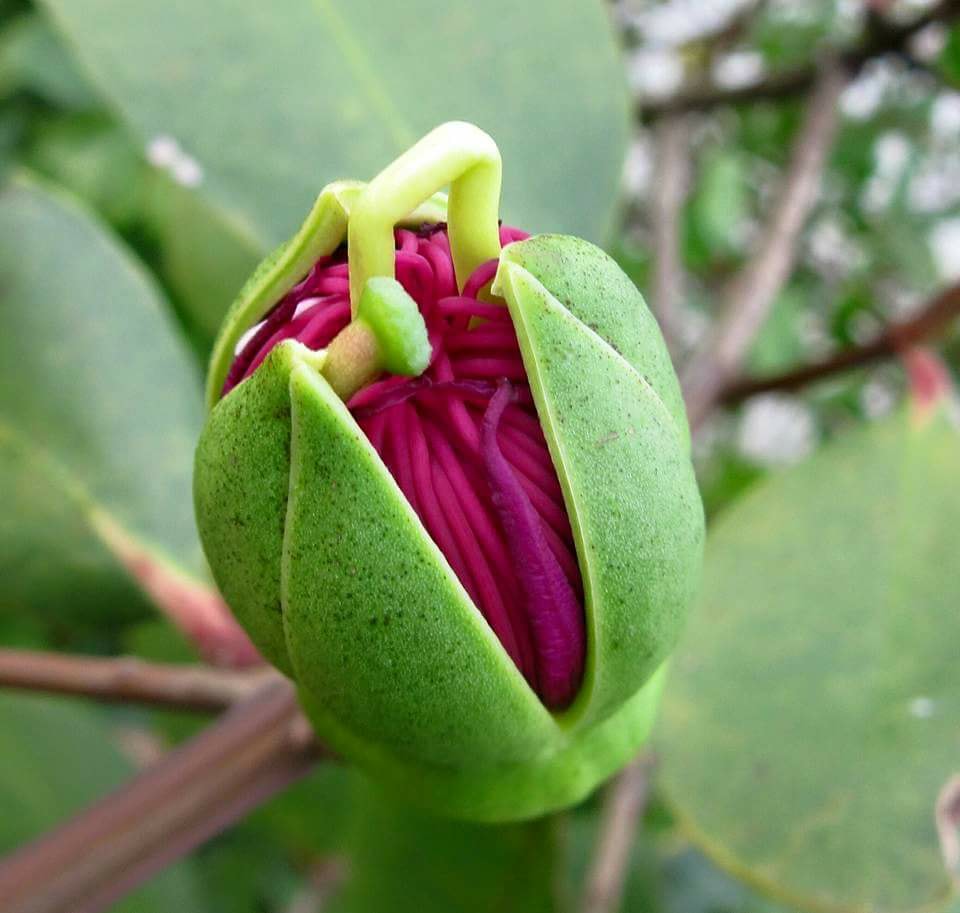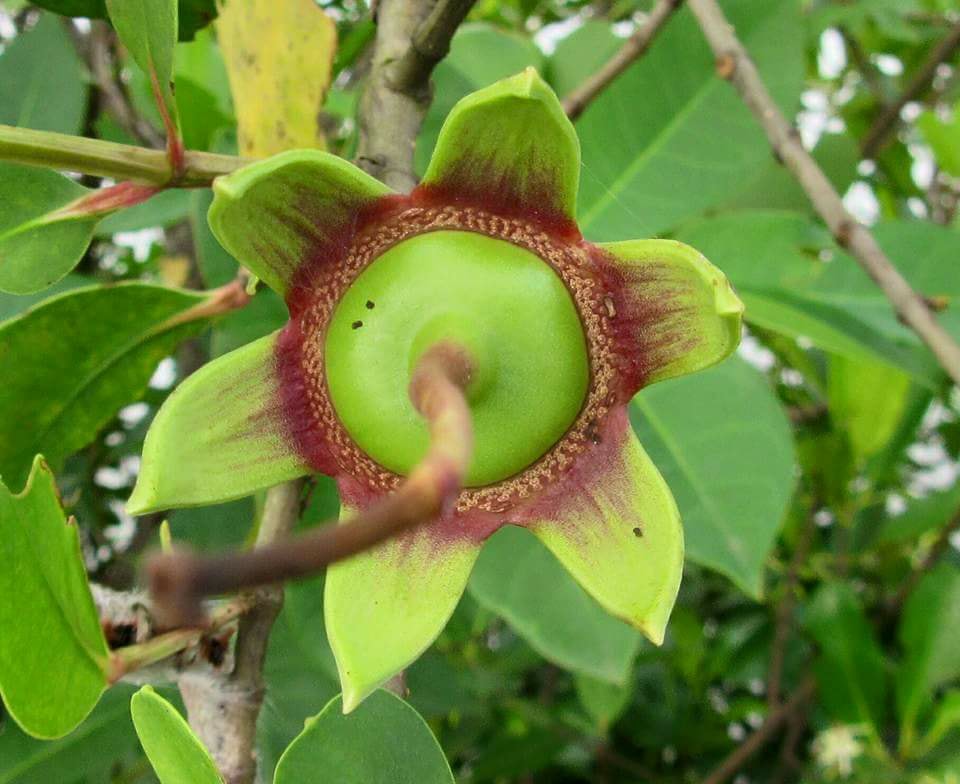Sonneratia caseolaris
Sonneratia caseolaris
Chakkara kandal, Blathi(Malayalam -ചക്കര കണ്ടൽ, ബ്ലാത്തി
)
A Beautiful Mangrove plant
Flowers used for bleeding from urinary tract
Fruit used as food and to prepare bevarages in Srilanka.
Common name: Apple Mangrove, Crabapple mangrove • Malayalam: Blatti, Chakkarakandal, Puzhamunja, Thirala

Botanical name: Sonneratia caseolaris Family: Lythraceae (Crape Myrtle family)
Synonyms: Sonneratia obovata, Sonneratia ovalis
The leaves and the fruit are edible and appreciated as food in certain areas, such as Maldives. In Sri Lanka, where the fruit is known as kirala gédi (කිරල ගෙඩි) in Sinhala, the pulp of the fruit is mixed with coconut milk extract and made into a milk shake.[6] Many tourist resorts situated in the South of Sri Lanka where the trees grow abundantly alongside rivers, offer fresh fruit drinks made from the fruit. In the Maldives the fruits are used as a refreshing drink and also eaten with scraped coconut & sugar.

The tree is also sometimes known as cork tree, because fishermen in some areas make fishing net floats by shaping the pneumatophores into small floats.
Evergreen trees, to 8 m high; pneumatophores 1 m long and 6 cm diameter, straight, stout, corky, conical, brownish grey or orange-coloured, outer thin layer flaky; bark brown, cracked; branchlets pendulous; angled, greenish-brown, glabrous; nodes swollen with 2 lateral pair of circular glands. Leaves simple, opposite-decussate, estipulate; petiole 5-10 mm long, stout, red, glabrous; lamina 4-11 x 3.5-6.5 cm, broadly ovate or broadly elliptic, base cuneate, apex mucronate, emarginate or obtuse, glabrous, coriaceous, thick, slightly fleshy, green; lateral veins 10-15 pairs, parallel, looped near the margin forming intramarginal nerve, slender, obscure, intercostae reticulate, obscure. Flowers bisexual, pink, 6 x 5-7 cm, terminal, solitary; bracts rudimentary, in conspicuous; pedicel 5-10 mm long, quadrangular, glabrous; calyx green outside, white within, calyx cup 1.8 x 2 cm, smooth, glabrous, enclosing the basal portion of the pistil; lobes 6, 2 x 1 cm, oblong, elliptic, acute, greenish outside, purplish-white within, thick, coriaceous, glabrous, persistent; petals 6, 2 x 0.2 cm, free, purple to violet red, acuminate, apex wrinkled and coiled, membranous, glabrous, cauducous; stamens many, free, inflexed in bud, inserted in several rows on the terminal raised rim of the calyx cup, conspicuous, cauducous; filaments upto 4.2 cm long, reddish below, white above, thread like, anthers reniform, medifixed, bilobed; ovary 1 cm across, globose, white, many celled, ovules many in each cell; style coiled in bud, to 6 cm, white, terete; stigma capitate. Fruit a drupe, 7 cm across, globose, slightly flattened, calyx lobes horizontal, pericarp smooth, glabrous; seeds many, embedded in the fleshy pulp of the placenta, angular with rough surface

Medicinal uses: Fermented fruit juice is said to be useful in arresting haemorrhage. The wall of an old fruit is given as a vermifuge. The juice of half-ripe fruit is used to treat coughs. The juice of the flowers enters into a compound for treating blood in the urine.

courtesy to Ajayan Sadanandan